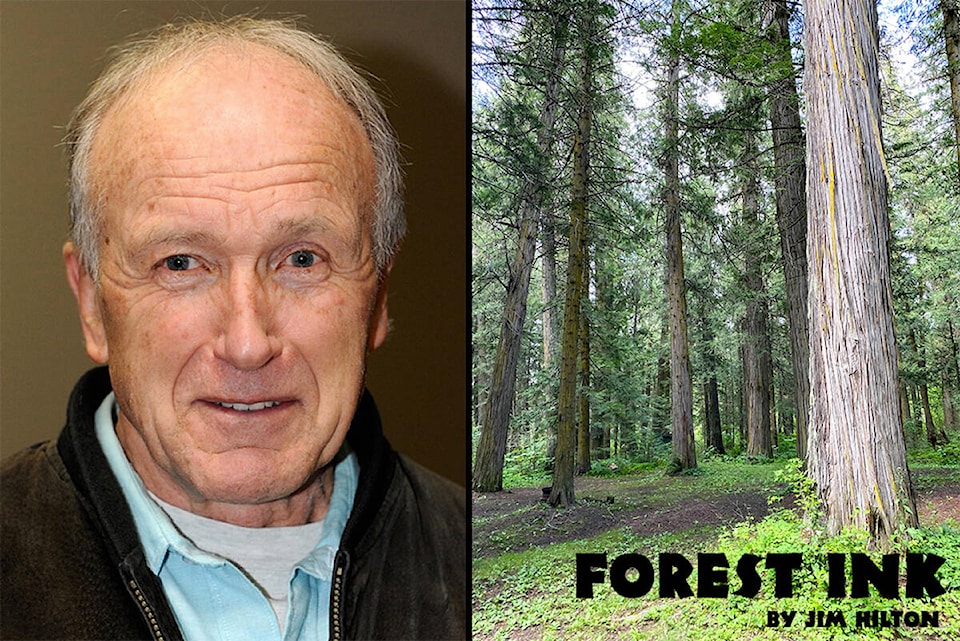While reading the community forest news letter, I came across a recent article regarding the ongoing discussions about our old growth forests.
Status of B.C.’s Old Forests, The Situation in 2021, October 21, 2021 by lead author Cam Brown was funded by the British Columbia Council of Forest Industries (BC COFI). One of the main reasons for publishing this article was to provide an alternative approach to the VRI site index (SI) data used in the article I wrote about last week, Last Stand for Biodiversity by authors Price, Holt and Daust.
The author Cam Brown suggests there is a superior method of deriving site indices especially for old growth forests. The provincial forest research staff published this data as the Provincial Site Productivity Layer (PSPL) with supporting validation. Using the new PSPL site indices the amount of old growth with SI greater than 25 is 29 per cent rather than the three per cent as discussed in the Last Stand for Biodiversity publication. As described last week a site index of 25 means a tree has attained a height of 25 meters in 50 years.
To illustrate his point, Mr. Brown describes how a study done on 533 verified Big Trees on B.C.s coast showed a large portion of these big trees have VRI site indexes \20m. The PSPL data shows a much stronger relationship between the presence of big old trees and higher site productivity.
Cam Brown also uses data from the Fairy Creek watershed to make the point of using PSPL site indices.
“This high-profile old growth area has attracted significant attention for preservation in the past year and is thus assumed to be high-value old growth. The upper 80 per cent of the watershed contains stands between 199 and 319 years (VRI ages) with VRI site indexes generally under 20m while the bottom of the watershed has higher site index values but younger stands at 30-70 years.
Thus, if stands must be 250 years old with site indices of at least 20m to be considered good quality old growth, a small fraction of this valley would meet that definition. Fairy Creek is thus largely excluded from what the Last
Stand for Biodiversity report defined as quality old growth (i.e. the 415,000 ha or three per cent of all old forest) and is a good example of why that report caused the confusion it did around the state of old growth in the province.”
I think Cam Brown does a good job of describing how forest inventories are done in the province and I also found his description of natural disturbance types was useful in explaining how there are older forests in the wetter forest types on the coast and some Interior stands.
I will also be interested in the response from other old growth researchers and planning foresters regarding his suggestion to use the PSPL site index.
I found there was some confusion between the data in some of the tables relative to the discussions and comparisons with the two reports. i.e. the PSPL had five per cent old growth with SI >25 while the VRI was three per cent. Not much difference.
I don’t want to get into the technical details in this article but would like to look at the positive side of there being more than a fraction of three percent old growth if we accept Mr. Brown’s report.
My concern is that this is not an attempt of industry to justify an increase in the annual allowable cut and continue with clear cuts as the main harvesting approach on many old growth sites.
In my opinion foresters should be experimenting with more innovative harvesting approaches rather than the clear cuts and more effort should be aimed at limiting the large amount of waste usually associated with past harvesting practices.
Having big old trees sitting in the middle of a clear cut surrounded by a fringe of trees is not in my view retaining much of the old growth forest values. I would like to stress the word “manage” in the OGMAs of our working forest land base because of pests and climate change some harvesting and controlled burns may be the only way to ensure their survival in the long term.
READ MORE: Western Red Cedar rot issues mainly in Interior forests
Do you have a comment about this story? email:
editor@wltribune.com
Like us on Facebook and follow us on Twitter.
